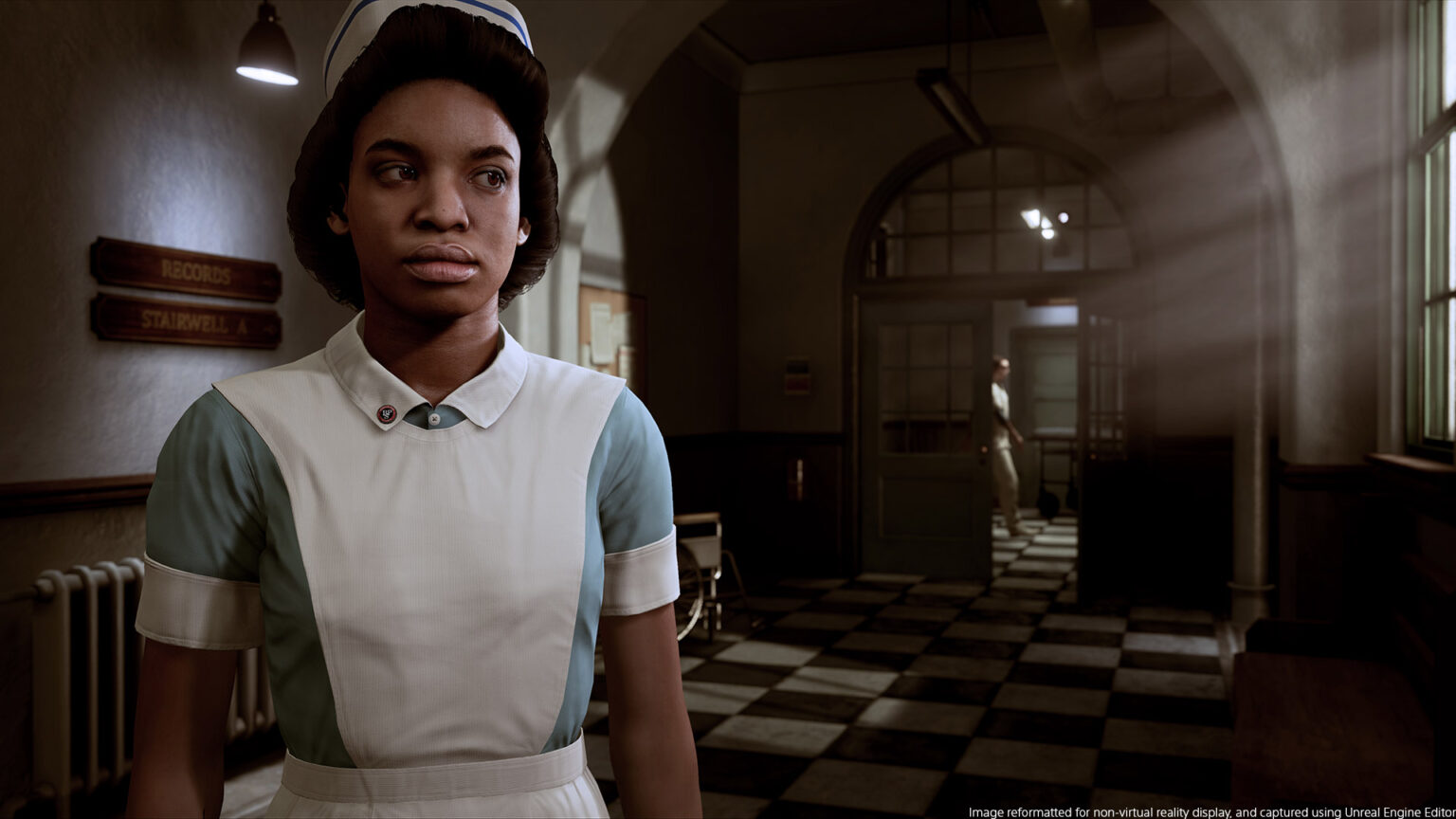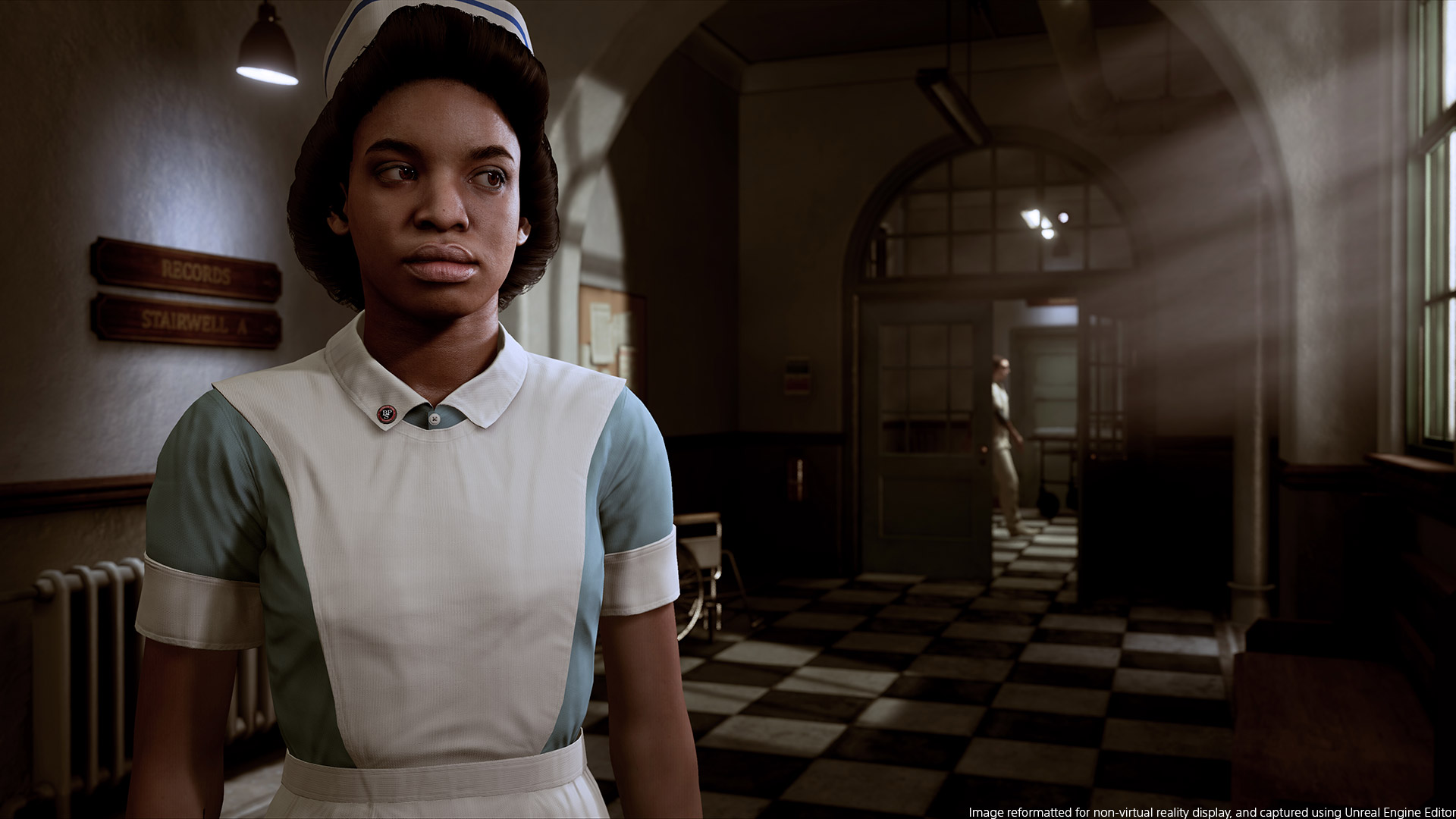Virtual Reality brought games to a whole new level, and most certainly horror ones. The immersive nature of VR magnifies the experience. I’m not a scaredy-cat when it comes to this genre, and I would have been the best pick to review this game since there aren’t many people in our team who can stomach playing horror games (especially in VR – sorry guys!), but my only challenge is that I easily get motion sickness. So let’s see how my literal stomach took Supermassive Games’ The Inpatient.

Platform Reviewed: PSVR (on PS4 Pro)
Platforms Available: PSVR (on PS4 Pro)
Publisher: Sony Interactive Entertainment
Developer: Supermassive Games
Release Date: January 23, 2018
Price: USD $39.99
This review is based on a review code provided by Sony Interactive Entertainment.
The Inpatient was developed by the same folks behind Until Dawn, and published by Sony Interactive Entertainment exclusively for the PS4 and the PSVR. It is a first-person survival horror that was set 60 years before the events of Until Dawn in what once was the Blackwood Pines Sanatorium. It’s considered a prequel to the game, and if you’ve made the right in-game choices, you’d stumble upon an ending that’s quite a shocker for Until Dawn fans.
I really like how they incorporated a bit of customization in this game. At the beginning of the game, you get to choose your character’s gender and skin color. It matters if you find it comforting to see arms from a first-person point of view on your preferred presets than loosely playing an unfamiliar character. It adds to the immersion. The game starts with a dazed, sedated and a confused you, strapped to a wheelchair in what appears to be an examination room of some sort. You don’t have an idea of where or who you are (oh, how original). I won’t spoil what happens next, as it’s worth discovering the plot twists and scares for yourself.
Aside from the traditional controls, the game added a voice control feature, so when you’re presented with two dialogue options you can say the lines out loud to trigger the next scene. It is a great feature but it’s something I wasn’t personally comfortable with. With the loud volume on my VR earphones, I can barely hear my own voice, and I can’t tell if I was already shouting or what, and people might think I’ve gone mad. But if you’re the type who loves to recite lines from your favorite video game cinematics or movies, this just might be your thing.
The movement controls for this game are however quite cumbersome. You have the option to either use a Dualshock controller or the PS Move. The Dualshock uses the motion sensor to move objects around, you turn it over when you’re examining things. However, using the Dualshock is like controlling a string puppet. Though it’s easier to navigate with it, it’s more difficult to interact with objects compared to when you’re using the PS Move.

To this point, we all know that the game has multiple endings. I don’t have an exact figure as to how many, but that there are several permutations, optional deaths, or rescues. This is where the “Butterfly Effect” comes in, and to those who don’t know what it is yet, the most simplistic way to describe it is how one choice or decision can affect the outcome of your story, hence the variable endings. It encourages the player to do multiple playthroughs. There’s always the best ending for these kinds of games. There are walkthroughs available on the internet if you’re inpatient…I mean impatient. But for me, other endings, or at least the ones that I’ve tried so far fell short. Most of them don’t last no matter what path you choose.
To expound, it’s more or less a 2-hour gameplay. It’s actually quite short considering that there’s more story than action. What makes it not short is the game’s replayability to come up with alternative versions of the story. And if your first playthrough was as unsatisfactory as mine, you’d find yourself contemplating on what ifs and what could have beens, and very eager to replay the game again, until alas! You’d realize that there’s no chapter select and you’d have to go through the whole thing again to come up with a different ending. Although you can appreciate the versatility of the permutations on how to unlock different endings, that even the slightest choice can change the gender of your roommate, a lot characters in the story just go off without us knowing who they are or what role they play. The lack of character attachment is a reflection of how the game lacks character development. Some endings are hard to follow, some are just sprinting towards a conclusion.
There were decent jumpscares, I admit. The immersion was really great and amplified because it’s VR. The terrifying sound effects are well-timed and the sounds in game are really realistic, well, almost. An example would be the sound your hand makes when it collides with things when you’re interacting with objects. Two thumbs up for the excellent sound design and the voice acting. I’d give it three if I had an extra hand for the superb facial animations and expressions. The doctor’s face so near that you can almost (virtually) touch it was so creepy that I’m sure we’ve met offline somewhere in dreamland.

The replay value of this game lives as far as your sanity can take you. However, in doing so, it wears off the “horror” part of the game as things become more predictable. You already know that there are long corridors, and if there’s something at the end of it, it’s scary. Pacing is also really slow. I think it was designed this way to minimize motion sickness. Motion sickness is the feeling you get when the motion you sense with your inner ear is different from the motion you visualize. However, what took the toll on me, in my experience, since the game was too dark (even if later on you get a flashlight), my eyes were strained trying to grasp the view, the objects, and the texts, and the worst part is when interacting with an object that has a memory, the transition is always too bright that my eyes actually hurt. Apart from the dark environment, there are many loading screens which are blackouts that happen in frequent and short durations.
I don’t recommend playing this game for multiple hours.






